| Previous
Page |
PCLinuxOS
Magazine |
PCLinuxOS |
Article List |
Disclaimer |
Next Page |
Slipstream On PCLinuxOS: Analysis |
|
by Alessandro Ebersol (Agent Smith)  If I were to define this game in one sentence, it would go something like this: A love letter to the arcade racers of the 80's (Outrun, Turbo Outrun, Outrunners, Top Gear and many others). Yes friends, the nostalgia is strong with this one, but it is not an empty nostalgia. Slipstream is inspired by the classics of the past, but it has enough personality to be original and fresh. The game was developed by Brazilian programmer Sandro Luiz de Paula, from Belo Horizonte, Minas Gerais, and the sound/music part by Stefan Moser, from Charleston, South Carolina. Some curiosities of the game's production:
Features
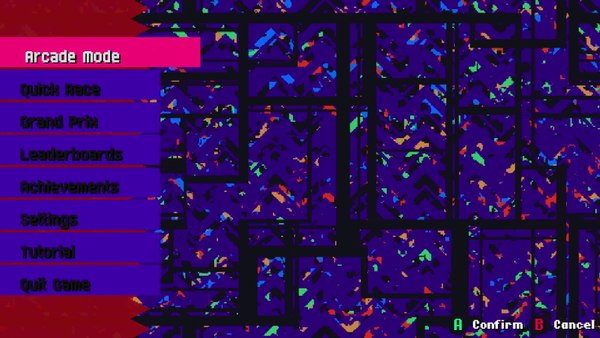 The game menu Menu Items Arcade: The standard game mode, where you play against the clock, to beat each track (and consequently move on to the next track), and also against a rival. Each track will have a different rival, and among them, the late painter Bob Ross. Quick Race: Quick race, where you can choose any car and track to play. There is no progression in this mode. Grand Prix: Championship mode, where up to four different cups are played, over 20 tracks around the world. Each cup has five races, and cash prizes are won to improve the car. Leaderboards: Online ranking, only available on the Steam version. Settings: Settings Tutorial: Learn to run Quit game: Exit the game What follows is my opinion on 4 essential aspects of the game: Graphics, Soundtrack, Gameplay and Replay value. Graphics The graphics are excellent, true pixel art that evoke the golden age of the bitmap arcades of the 90s. They are so well made, it is hard to believe that they were made on Linux. Below are some screenshots: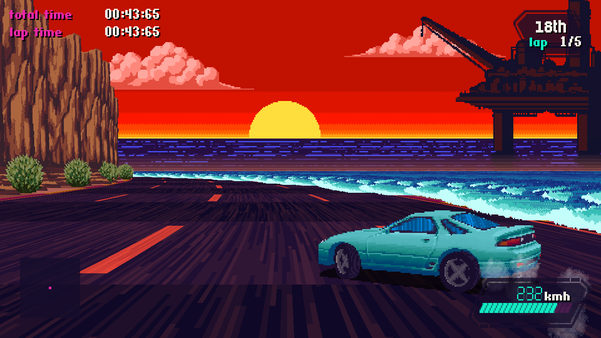 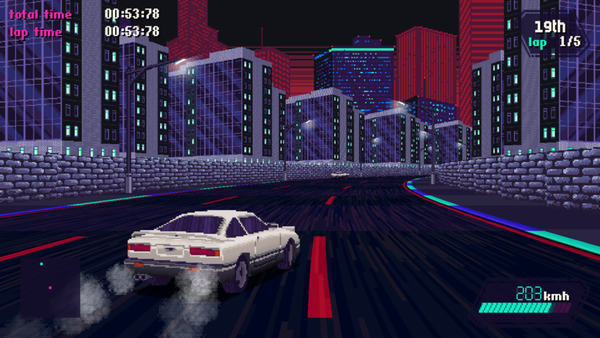 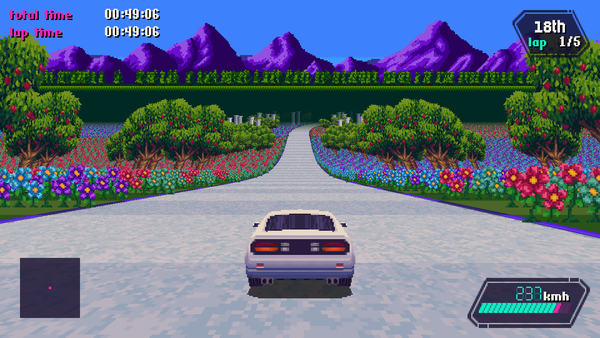 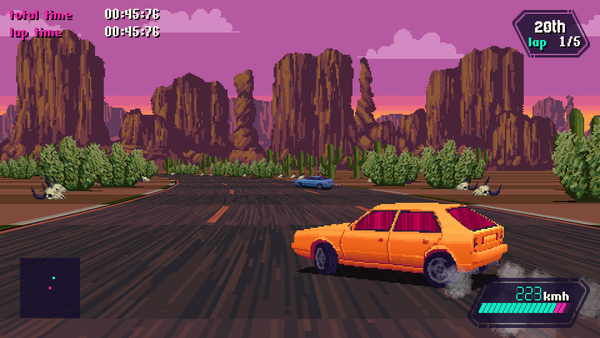 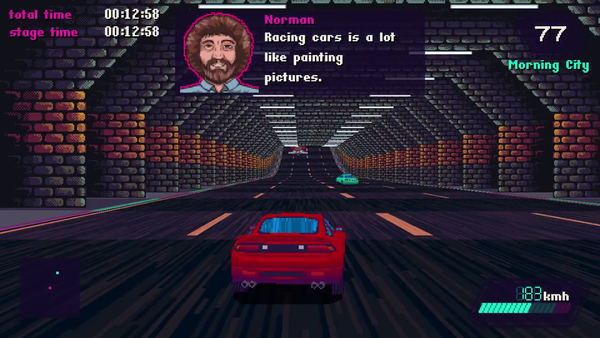 Yes, Bob Ross challenges you in a race Soundtrack The exclusive soundtrack was also created using synthesizers from the era, such as the Yamaha DX-21, which make the game sound as authentic as it sounds. Listening to the game, it seems that I am watching Stranger Things again, so good is the music, and the emulation of the old synth pop classics from the 80s (Duran Duran, Baltimora, P. Lion and others). Gameplay Here we come to a very important point: There is no point in having great graphics and music, if the gameplay is lame. A pleasant surprise was the automatic detection of the joystick, without any additional configuration. The game is fast, exciting and leaves the player on the edge of his seat. So good is the animation in the game, that again, it is hard to believe that it was made in Java, due to the speed and quality of the game. Being able to play between four players on the same computer is a journey of nostalgia, to the time when children gathered in the homes of friends, to challenge them, whether it was at Super Mario Kart, or Top Gear (who doesn't remember?). Now, the controls are responsive, and the different tracks have their characteristics: rain, snow, desert, beach, which affects the control of the car, a very cool touch of realism. But, not everything is perfect: Special maneuvers, notably Drift and Slipstream are very difficult to do. The drift is done like this: Release the accelerator, touch the brake, and accelerator again. The problem is that this game mechanic is not intuitive: In all racing games, the drift is always done by pressing the hand brake, and, by slowing the acceleration a little, not with this confusing mechanic. It took me two days to do the drifts right. But worse is the slipstream, the maneuver that gives the game its name: This one, I never consciously managed, and it came out a few times, but alien to my will. Replay Value With several racing modes, multiplayer, arcade mode, quick race and championships, the game offers many hours of fun. This game has a good longevity, since you will spend a lot of time trying to advance in the various achievements that it offers. However, there could be secret cars, which would be unlocked as the player progresses. Multiplayer on the local network has already been promised by the author, so the game will improve. Verdict Costing US$ 9.99, the game is accessible, and worth buying: A) If you like retro games. B) If you like arcades from the 80s, but feel that the good old games are no longer to be found. C) You want to encourage a developer who uses Linux exclusively in his work. Links:
Game website: https://slipstre.am/ |



